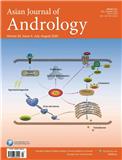
亚洲男性学杂志(英文版)(Asian Journal of Andrology ) 知网目次万方目次维普目次
- CSCD
- 科核
- 主管单位:
中国科学院
- 主办单位:
中国科学院上海药物研究所、上海交通大学
- 国际刊号:
1008-682X;EISSN1745-7262
- 国内刊号:
31-1795/R
- 学科分类:
- 字数:
4000-62000
- 有无基金:
/有基金 100.0%
- 周期:
CN外文-双月刊
- 特殊属性:
第一批认定学术期刊
- 电话:
021-54922824(202303期)
- 邮箱:
aja@sibs.ac.cn(202303期)
- 复合因子:
0.758
- 综合因子:
0.498
- 收录:
知网目次,万方目次,维普目次
- 级别:
CSCD,科核
期刊简介
《亚洲男性学杂志》期刊已被查看: 次
更新频次
低频栏目:
2006年06期文章-16.7%-期平均发文量22篇
2006年05期文章-16.7%-期平均发文量18篇
2006年04期文章-16.7%-期平均发文量17篇
2006年03期文章-16.7%-期平均发文量20篇
2006年02期文章-16.7%-期平均发文量20篇
2006年01期文章-16.7%-期平均发文量19篇
单位占比
其他-100.0%一作占比
/有基金-100.0%投稿指南
1、投稿方式:在线投稿。
2、刊内网址:http://www.asiaandro.com/
http://www.ajandrology.com
3、投稿系统:
https://mc.manuscriptcentral.com/aja
4、出刊日期:双月刊,一年出版6期。
2023年12月1日星期五
《亚洲男性学杂志(英文版)》投稿须知
【官网信息】
Instruction for Authors
Aims and Scope
Asian Journal of Andrology (AJA) launched in 1999, is an international peer-reviewed open-access journal devoted to basic and clinical andrology and related sciences. AJA is sponsored by the Shanghai Institute of Materia Medica at the Chinese Academy of Sciences (SIMM) and Shanghai Jiao Tong University (SJTU). AJA has an Advanced Online Publication service and publishes in print bimonthly. The Editor-in-Chief of AJA is Professor Jin-Song Li from the Center for Excellence in Molecular Cell Science at the Chinese Academy of Sciences. The scope of AJA includes, but is not limited to:
Male infertility: etiology, pathogenesis, diagnosis, treatment, and prevention
Sperm biology: cellular and molecular mechanisms
Semen analysis, sperm function, and ART outcomes
Male reproduction: structure, function, and hormonal regulation
Male sexual dysfunction
Male puberty development
Male aging
Prostate diseases
Surgical technique and treatment in the field of andrology
Environmental, lifestyle, and genetic factors in male health
The journal is indexed in DOAJ, EMBASE/Excerpta Medica, Index Medicus for South-East Asia Region, MEDLINE/Index Medicus, PubMed Central, Scimago Journal Ranking, Scopus, Science Citation Index Expanded, and Web of Science.
Article Types
AJA publishes Original Articles, Reviews, Opinions, Invited Commentaries, Research Highlights, Clinician’s Workshop, and Letters to the Editor.
Original Article
Studies that are of high scientific quality and that are of interest to the diverse readership of the journal. Manuscripts should include abstract and appropriate experimental details to support the conclusions. Original Articles should be no more than 5000 words and should not normally include more than six display items (tables and/or figures). Manuscripts should consist of the following sections: title, abstract and keywords, text (introduction, materials and methods, results, and discussion), author contributions, competing interests, acknowledgments, supplementary information, references, tables and/or figures with captions.
Review
Reviews survey recent developments in a topical area of andrology. Most Review articles are solicited by the editors; however, we also welcome timely unsolicited Reviews. Authors should present the proposed content to the editors prior to submission. Reviews have a word limit of 6000 words excluding references, and a maximum of 100 references.
Letter to the Editor
Letters report clinical case studies, preliminary experimental studies of novel findings but limited by small sample size or duration, and personal perspectives on the field of andrology. Letters do not contain an abstract and keywords, and there is no obligation to divide the text into sections. Experimental details are not required, but brief experimental methods and results should be included. In all other aspects, the directions for full papers should be followed. The text, not including references, tables, figures or legends, must not exceed 1000 words. No more than 10 references and either 1 table or 1 figure are allowed.
Opinion
These may be submitted or invited by the editors. To submit a pre-submission inquiry, please send an email to the editorial office to obtain a quick editorial feedback on the unsolicited work. Opinions are stand-alone and discuss an important and contemporary element of andrology. They do not contain primary research data, but they may present funding trends, demographics, bibliographic data, scientific and social development, etc. Opinions have a word limit of 1500 words excluding references, no more than 2 figures or tables, and 10 references.
Commentary
This is a commission-only section. Commentaries which briefly highlight the findings and the merits of the work, focus on the AJA articles and explain the significances to a broad readership. The word limit is 1000 and a maximum of 10 references are allowed. The authors from the original articles may present a brief reply (less than 500 words) to the Commentaries.
Research Highlight
This is a commission-only section. Research Highlights provide a ‘digest’ of the best and most interesting publications in the field of andrology. They should contain no more than 1000 words and a maximum of 10 references.
Clinician’s Workshop
This section represents innovative clinical experiences of the application of new technology or techniques in andrology, particularly to a specific question relevant to clinical diagnosis or treatment. This feature covers cutting-edge technology, modified and improved techniques or procedures, and outcome data. Experimental details are not required, but experimental methods and results should be outlined. They should contain no more than 1500 words with a summary of 100 words, a maximum of 3 tables or figures, and 20 references. No more than 5 authors are allowed.
Formatting Requirements
Please take care to follow the requirements when preparing your article before submission. The main text and tables should be submitted as editable files (Word doc or docx), not PDFs. Use 12-point font size, double-space text, and leave right margins of at least 2.5 cm. Continuous line numbering should be used on the submitted manuscript. Figures should be uploaded as separate files where possible. Please make spelling consistent with current editions of either Webster's Dictionary or Oxford English Dictionary. Submissions should include the following sections.
Cover letter
The cover letter must state that the material has not been submitted for publication elsewhere while under consideration for AJA. Identify the name, full postal address, and Email address of the corresponding author.
Title page
The title should be concise but informative, and keywords in the title will help the articles be searched online. The title page should have full names and affiliations for each author. Full contact details should be provided for the corresponding author. There should be fewer than 10 co-authors.
Authorship must meet all the following 4 criteria, based on International Committee of Medical Journal Editors (ICMJE) guidelines.
* Substantial contributions to the conception or design of the work; or the acquisition, analysis, or interpretation of data for the work; AND
* Drafting the work or revising it critically for important intellectual content; AND
* Final approval of the version to be published; AND
* Agreement to be accountable for all aspects of the work in ensuring that questions related to the accuracy or integrity of any part of the work are appropriately investigated and resolved.
Abstract and keywords (if applicable)
The abstract should be non-structured and no more than 250 words. Abbreviations and reference citations should be avoided. It should outline the purpose of the study, the basic procedures, and the most important conclusions. Please provide a running title of no more than 50 characters, including spaces.
Three to eight keywords separated by a semicolon (;) should be given in alphabetical order below the abstract. Whenever possible, please choose the terms from the Medical Subject Headings list of Index Medicus.
Introduction
This should give a short, precise account of the background and reasons for undertaking the study. It should not be a review of the literature.
Materials and methods
This section should contain sufficient details so that all experimental procedures can be repeated by others in conjunction with cited references. This section may be divided into subheadings to assist the reader. Names of products and manufacturers should be included only if alternative sources are deemed unsatisfactory, giving both the company name and city. Generic names of drugs should be used. If necessary, the brand, trade, or commercial name of a drug can be included in parentheses on the first mention. Scientific species nomenclature should be used at all times, providing the genus, species (in italics), and authority for all microorganisms, plants, and animals.
Novel experimental procedures should be described in detail, but published procedures should be referred to by literature citation of the original article and published modifications. Use of standard abbreviations and SI units of measurement (according to the Systeme International d’Unites) is encouraged. Measurements that are not currently converted to SI units in biomedical applications are blood and oxygen pressures, enzyme activity, H+ concentration, temperature, and volume. Abbreviations, if used, should be defined on their first appearance in the text.
Identify the drug administration schedule; for example, dose (base or salt) and route of administration. The routes of administration may be abbreviated: intraarterial (ia), intracerebroven-tricular (icv), intragastric gavage (ig), intramuscular (im), intraperitoneal (ip), intravenous (iv), per os (po), subcutaneous (sc).
Statistical methods should be described when they are used to verify the results. Choose suitable techniques for the statistical treatments; for example, t-test (group or paired comparisons), chi-squared test, Ridit, probit, logit, regression (linear, curvilinear, or stepwise), correlation, analysis of variance (ANOVA), analysis of covariance, etc.
Only homogeneous data can be averaged. Standard deviations are preferred to standard errors. Give the number of observations and subjects (n). Losses in observations, such as drop-outs from the study should be reported.
Values such as ED50, LD50, IC50 should have their 95% confidence limits calculated and compared by weighted probit analysis (Bliss and Finney).
The word ‘significantly’ should be replaced by its synonyms (if it indicates extent) or the P-value (if it indicates statistical significance).
Dosage is expressed as per kg (even in mice). Concentration in solution is expressed as per l, not per ml. Values for rpm should be converted into gravity (g). Absorbance (A) values are preferred to optical density (OD) values.
Symbols are not pluralized (e.g., 9 kg, not kgs) and are not followed by a period (e.g., min, not min.).
Use 12.4 mm (not 0.0124 m), 5 µmol (not 5×10-6 mol), 3-8 g, 3%-8%, 3 m×8 m×2 m, 8±3 g, (8±3) nmol l-1 g-1 (protein).
Do not include more digits than are justified by the accuracy of the determinations. For example, a dog weighs 9 kg (not 9000 g, which implies an accuracy of 1 g). In a sample, the effective digits are determined by the variation within the sample, that is, one-third of the standard deviation. For example, 8.6±2.9 kg (not 8619±2930 g, or 9±3 kg).
For isotopically labelled compounds, use a square bracket directly attached to the front of the name (word) or formula. Examples: [14C]urea, [α-32P]ATP (not AT32P), sodium [14C]formate, [1-14C,2-13C]acetaldehyde, [carboxy-14C]leucine, and [1-3H]ethanol. However, both [131I]iodoalbumin and 131I-albumin are correct.
The SI unit for radioactivity is becquerel (Bq): 1 Ci=37×109 disintegrations per second=37 GBq. The disintegrations per minute (dpm), not counts per minute (cpm), should be converted to Bq for presentation.
Results
The description of results should not simply reiterate data that appear in tables and figures, and likewise, the same data should not be displayed in both tables and figures. The results section should be concise and follow a logical sequence. If the paper describes a complex series of experiments, it is permissible to explain the protocol/experimental design before presenting the results. Do not discuss the results or draw any conclusions in this section. This section may be divided into subheadings to assist the reader. Large datasets or other cumbersome data pertinent to the manuscript may be submitted as supplementary information.
Discussion
Do not recapitulate the results but discuss their significance against the background of existing knowledge and identify novel aspects. The final paragraph should highlight the main conclusion(s) and indicate the direction future research should take. This section may be divided into subheadings to assist the reader.
Author contributions
All multi-authored papers should include an ‘Author contributions’ section at the end of the paper to accurately reflect the contributions of each co-author. We suggest the following kind of format (please use initials to refer to each author’s contribution): JDE carried out the genetic studies, participated in the proteomic analysis, and drafted the manuscript. JSR carried out the immunoassays and performed the statistical analysis. JMP conceived the study, participated in its design and coordination, and helped draft the manuscript. All authors read and approved the final manuscript.
Competing interests
Define if there is any competing interest. If there is no competing interest, we suggest the following format: All authors declare no competing interests.
Acknowledgments
These should be brief and made only for those who have made a significant contribution to the study. Please state the financial support if applicable.
References
Authors are responsible for the accuracy of the references. Published articles as well as those in press (please state the name of the journal and enclose a copy of the manuscript) may be included. All references to the literature cited will be given in the order of their appearance in the text in a consecutively numbered list at the end of the article. All authors should be quoted for papers with up to five authors; for papers with more than five authors, only the first five authors should be quoted, followed by et al.
An EndNote style file is available to download here.
Example of journal citations:
1) Ziegelmann MJ, Farrell MR, Levine LA. Modern treatment strategies for penile prosthetics in Peyronie's disease: a contemporary clinical review. Asian J Androl 2020; 22: 51-9.
2) Li Y, Liu WS, Yi J, Kong SB, Ding JC, et al. The role of tyrosine phosphatase Shp2 in spermatogonial differentiation and spermatocyte meiosis. Asian J Androl 2020; 22: 79-87.
Example of a book citation:
3) Armitage P. Statistical Methods in Medical Research. Oxford: Blackwell Scientific Publishers; 1971. p239.
Example of an article in a book:
4) Morley JE, Kaiser FE, Jonson LE. Male sexual function. In: Cassel CK, Riesenberg DE, Sorensen LB, Walsh JR, editors. Geriatric Medicine. New York: Springer-Verlag; 1990. p25670.
The names of journals cited should be abbreviated according to the style used for PubMed (https://pubmed.ncbi.nlm.nih.gov/).
Citations of ‘unpublished data’ and ‘S. A. Waksman, personal communication’ should be written in the text parenthetically. Abstracts may be cited only if they are the sole sources and must be identified in the reference list as ‘(Abstract)’. Manuscripts that have been accepted for publication but are not yet published must be identified in the reference list as ‘in press’. Written proof for ‘personal communication’ and preprint for ‘in press’ may be requested for review.
Tables
These should be labeled sequentially as Table 1, Table 2, etc. Multiple sub-tables (Table 1a, Table 1b) are not allowed. Tables should be cited in the text consecutively. Reference to table footnotes should be made by means of Arabic numerals. Tables should not duplicate the content of the text. They should consist of at least two columns; columns should always have headings. Tables should have a brief footnote that identifies all abbreviations used. Authors should ensure that the data in the tables are consistent with those cited in the text, particularly the totals and percentages are calculated correctly.
Figures
All figures should be numbered and referred to in the text by their number. Figure captions should be provided at the end of the manuscript and should be brief and informative. Please include any relevant copyright information if taken from a published source. If a table or figure has been published before, the authors must obtain written permission to reproduce the material in both print and electronic formats from the copyright owner and submit it with the manuscript. Illustrations must clearly convey their message and be of high quality and sufficient size and clarity (especially lettering, arrows, and data points) to be interpretable when reduced for publication.
Scale bars should be provided on photographs. Colour figures are welcomed, and will be published in colour both online and in print. Please note that there will be a cost for colour figure printing.
Supplementary information
Supplementary information is peer-reviewed material directly relevant to the article that cannot be included in the printed version owing to the space limit. It is posted on the journal's website and linked to the article when the article is published and may consist of data files, graphics, movies, tables, figures and any other supporting material. If there are multiple tables and figures, please combine them all in a single editable Word document with figures embedded.
The printed article must be complete and self-explanatory without supplementary information. Supplementary information must be supplied to the editorial office in its final form for peer review. On acceptance, the final version of the peer reviewed supplementary information should be submitted along with the accepted paper. Please note that supplementary information is created by the authors and will not be edited by the Editors, so please proof-read it thoroughly before submission.
Please supply the supplementary information via our online submission system with ScholarOne Manuscript Central (http://mc.manuscriptcentral.com/aja), in an acceptable file format (see below).
• Quick Time files (.mov)
• MPEG movie files (.mpg)
• Sound files (.wav)
• MS Word documents (.docx)
File sizes must be as small as possible so that they can be downloaded quickly. We would recommend a frame rate of 15 frames per second. If applicable to the presentation of the supplementary information, use a 256-colour palette. Please consider the use of lower specifications for all of these points if the supplementary information can still be represented clearly. Our recommended maximum data rate is 150 KB/s.
The number of files should be limited to eight, and the total file size should not exceed 8 MB. Individual files should not exceed 1 MB. Please seek advice from the editorial office before sending files larger than our maximum size to avoid delays in publication.
Cover image
We welcome authors to submit a potential cover image for use in the journal to promote of their articles. Please make sure you are the copyright owner or you have obtained all relevant copyright permissions before submitting an image to us. You can upload any potential image as a “Cover Image” when submitting the revised files. There will be no additional cost of cover images during publication.
Non-Native Speakers of English
Editorial decisions are made solely on the quality of the scientific content of the manuscript. However, poor and unclear language can obscure the scientific content of articles. Non-native English authors are encouraged to use language editing services if needed, but AJA does not take responsibility for these services. Using editing services can address these problems but does not guarantee acceptance.
If your manuscript has been professionally edited by a language editing service, please also provide us the proof issued by the editing service.
Submit Your Article
All papers should be written in concise English but should contain sufficient detail to illustrate how the results were obtained. Our online submission system is at ScholarOne Manuscript Central (http://mc.manuscriptcentral.com/aja). Please consult the User Guide to enable you to complete the submission. Our system will immediately assign an ID number to a submitted manuscript, which we request authors to refer to in all subsequent correspondence.
……
更多详情:
http://www.asiaandro.com/ep9.asp
上一篇:三峡大学学报(自然科学版)下一篇:实验动物科学
《亚洲男性学杂志》同类外科学期刊
-
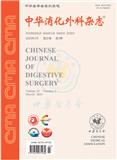
中华消化外科杂志
北核,CSCD,科核,武A+,高T2
CN中文-月刊影响因子2.781
-

中华显微外科杂志
北核,CSCD,武A-
CN中文-双月刊影响因子1.939
-
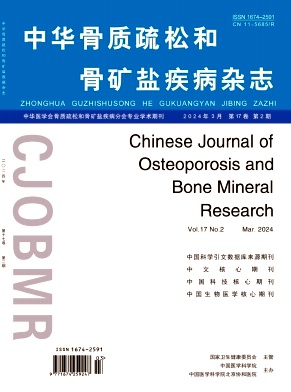
中华骨质疏松和骨矿盐疾病杂志
北核,CSCD,科核,武A,高T3
CN中文-双月刊影响因子1.349
-
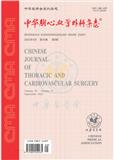
中华胸心血管外科杂志
CSCD,科核,高T2
CN中文-月刊影响因子0.752
-

中华手外科杂志
北核,CSCD,科核
CN中文-双月刊影响因子1.035
-

中国胸心血管外科临床杂志
北核,科核,CSCD扩,武B+,CACJ-扩展
CN中文-月刊影响因子0.936
-
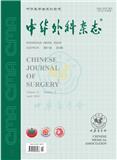
中华外科杂志
北核,CSCD,科核,武A+
CN中文-月刊影响因子1.358
-
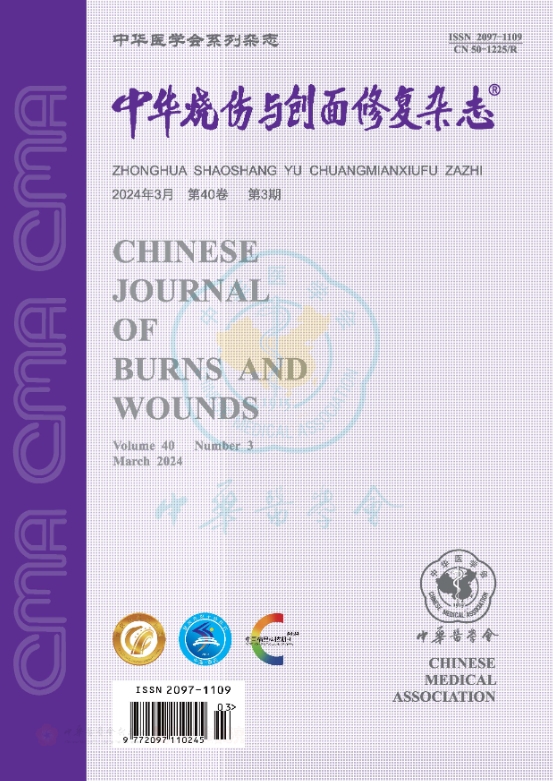
中华烧伤与创面修复杂志(原:中华烧伤杂志)
北核,CSCD,科核,武A,高T1,高T2
CN中文-月刊影响因子1.581
常见问题
-
亚洲男性学杂志杂志社官网、联系方式是什么?
亚洲男性学杂志杂志社官网:http://www.asiaandro.com/
投稿网址:https://mc.manuscriptcentral.com/aja联系电话:021-54922824(202303期)
投稿邮箱:aja@sibs.ac.cn(202303期) -
亚洲男性学杂志杂志是核心期刊么?
亚洲男性学杂志是核心期刊,级别是:CSCD,科核, 是:外科学分类下的知网目次,万方目次,维普目次收录的期刊。
-
请问你们是亚洲男性学杂志杂志社吗?
我们不是《亚洲男性学杂志》杂志社。本站主要从事期刊信息展示与期刊推荐,不是任何杂志官网,直投稿件请联系杂志社。本站仅提供免费的学术指导、论文辅导、期刊投稿信息整理收集服务。
-
你们指导服务后可以保证文章被发表吗?
期刊发表的成功与否,主要取决于文章内容的质量。编辑老师会根据研究领域、创新性等多因素进行考量。我们会帮助您理解期刊的发表要求,助力提升发表几率,从而增加发表的机会。
-
晋级论文能否在报纸上发表?
在学术界,论文的发表往往被视为研究者职业发展的重要一环。晋级论文,即为了获得更高职称或学术地位而撰写的学术论文,通常需在专业期刊上发表。然而,许多人可能会问
